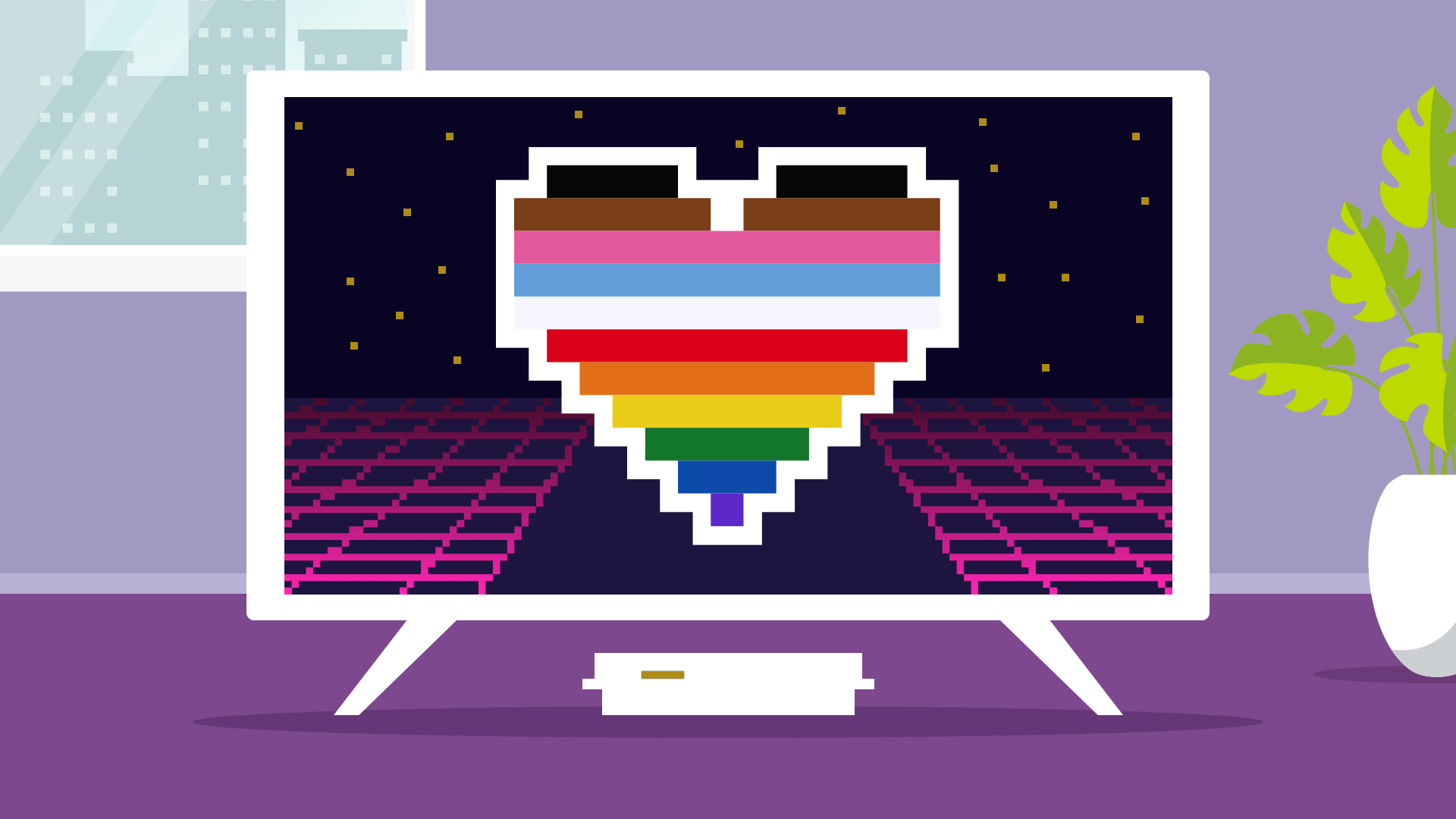With Us

Blog
LGBTQIA Gamers Challenge the Idea of a ‘Typical’ Gamer
The LGBTQIA community is exceptional, and the space they inhabit within the gaming world is no different. LGBTQIA gamers stand apart from other gaming audience groups, especially when it comes to gamer identity, motivations for playing and engagement.
However this under-researched audience segment is often left out of the conversations around who makes up the gaming audience, or whether there is such a thing as a ‘typical’ gamer. Taking a closer look at LGBTQIA gamers reveals the key role they play in the gaming community as well as the diversity of the gaming audience as a whole.
One of the reasons so many misconceptions exist about gaming audiences is due to the lack of self-identification by those who play or engage with video games. But this isn’t the case for LGBTQIA gamers. 51% of LGBTQIA gamers identify as a gamer, compared to 36% of heterosexual and cisgender gamers. This is in part due to the fact that LGBTQIA gamers start gaming at an earlier age. Gamers who engage with video games at an earlier age are more likely to identify as a gamer, and on average, LGBTQIA gamers started gaming at 22 years old, compared to 28 years old for heterosexual and cisgender gamers.
When we look at the motivations of LGBTQIA gamers, we start to get a stronger picture of why this audience segment starts playing at a younger age and are more likely to identify as a gamer. In general, LGBTQIA motivations for gaming are of a deeper psychographic and emotional connection to the content of gaming, beyond the enjoyment they get out of the mechanics. LGBTQIA gamers are more likely to cite ‘identifying with characters’ and ‘enjoying the fantasy or story provided by video games’ as motivations than heterosexual and cisgender gamers.
For LGBTQIA gamers, video games represent a space where they can express themselves, while being creative and imaginative. The fantasy and creativity that gaming can provide are a gateway for LGBTQIA gamers to connect with narratives and characters outside of their physical world. It provides a sense of escapism as well as an outlet for self-expression.
Gaming is also a place where LGBTQIA gamers can connect with themselves, and this becomes clearer when looking at the types of games this audience group is more interested in. Simulation and role playing games are the two genres that LGBTQIA gamers enjoy playing more than heterosexual and cisgender gamers, and both of these genres provide the opportunity for further exploration of worlds and ideas beyond their day-to-day lives. There is a strong correlation between the motivations of LGBTQIA gamers and their interest in these specific genres.
Shifting to gaming behavior, LGBTQIA gamers exhibit two tendencies that differentiate them from heterosexual and cisgender gamers. Namely, LGBTQIA gamers are more likely to watch other people play video games online and to consume content or news about video games. These differences can be explained in part by a combination of the number of games they’re interested in (particularly Overwatch, World of Warcraft, and Diablo) and the large number of motivations for playing.
LGBTQIA gamers are also more likely than heterosexual and cisgender gamers to think that the portrayal of LGBTQIA people in games is positive. This is especially evident with people who play games such as Overwatch, which features several LGBTQIA characters. Motivations around characters and expressiveness also strengthen LGBTQIA gamers’ tendency to hold a higher positive perception of LGBTQIA representation within gaming.
LGBTQIA gamers’ motivations, behavior and engagement with video games differentiates them from other gaming audience segments. This audience segment is proud to identify as a gamer and sees gaming as something which delivers value, creativity and connectivity. And like all gamers, LGBTQIA gamers are diverse, helping to remind us that there is no such thing as a typical gamer.
Research Methodology: Activision Blizzard Media partnered with Toluna Insights to perform a global, online quantitative research study to explore the behaviors and motivations of 21,167 gamers 18+. This report compares two US audience segments within our research: those who identify as LGBTQIA, (n=1,295), and those who do not (n = 8672). LGBTQIA was defined by those who did not identify as cis, did not identify as heterosexual, or both.
Advertise
With Us
Let's Start By Getting Connected
THE LATEST NEWS & CONTENT
Mobile Gaming: The Common Denominator Among All Game Players
In the increasingly diverse world of gaming, reaching unique, valuable audience segments offers a significant opportunity for brands and advertisers.
Why Multiplatform Players are More Receptive to Advertising
As the gaming industry continues to take its place in the entertainment ecosystem, understanding the different audience segments becomes increasingly critical for brands looking to tap into this lucrative market.
IAB PlayFronts 2024 Recap
The IAB PlayFronts 2024 marked a significant milestone in the digital entertainment sphere, bringing together industry innovators to share insights and chart the future of interactive media for the third year in a row.









